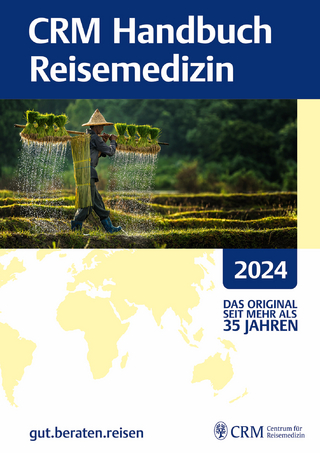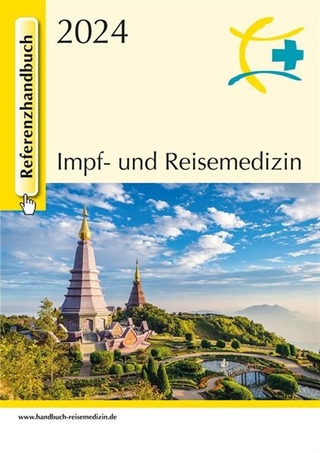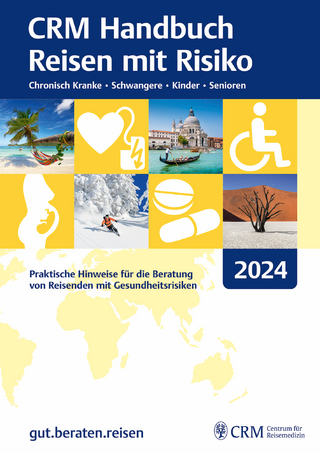
The Viroids
Kluwer Academic/Plenum Publishers (Verlag)
978-0-306-42523-3 (ISBN)
- Titel ist leider vergriffen;
keine Neuauflage - Artikel merken
I. Organisms, Viruses, and Viroids.- II. The Biochemical Significance of Viroids.- III. The Possible Evolutionary Significance of Viroids.- IV. References.- I. General Section.- 1 Biological Properties.- I. Introduction.- II. Symptomatology.- A. Macroscopic Symptoms.- B. Cytopathic Effects.- C. Biochemical Disturbances.- III. Ecology and Epidemiology.- A. Origin of Viroid Diseases.- B. Environmental Factors.- C. Natural Transmission.- D. Economic Importance and Control Measures.- IV. Experimental Biology.- A. Experimental Transmission.- B. Experimental Host Range.- C. Propagation.- D. Identification.- E. Quantitation.- F. Purification.- G. Diagnostic Procedures.- H. Interaction with Other Pathogens.- V. References.- 2 Physical—Chemical Properties: Molecular Structure (Primary andSecondary).- I. Introduction.- II. Purification of Viroids.- A. Preparation of Plant Extracts.- B. Purification.- III. Sequence Determination of Viroids.- A. Fingerprint Analysis.- B. Direct RNA Sequencing.- C. Primer-Directed Sequence Analysis.- D. Sequencing of Viroids Using Cloned cDNA.- IV. Structure of Viroids.- A. Circular Structure of Viroids.- B. Sequence and Structure of Viroids.- C. Structural Domains of Viroids.- D. Structure of ASBV.- V. Conclusion.- VI. References.- 3 Physical—Chemical Properties: Structure Formation.- I. Introduction.- II. Experimental Analysis.- A. Optical Melting Curves.- B. Calorimetry.- C. Electron Microscopy.- D. Gel Electrophoresis.- E. Kinetics.- F. Influence of Ionic Strength and Other SolventConditions.- III. Theoretical Analysis.- A. Elementary Parameters.- B. Mechanistic Models.- IV. Mechanism.- A. Premelting Regions.- B. Main Transition and Formation of Stable Hairpins.- C. Reversibility.- D. Experiment and Theory.- V. Structure Formation and Function.- A. Viroids: A Dynamic Principle.- B. Premelting and Virulence.- C. Relevance of Stable Hairpins.- VI. Addendum.- VII. References.- 4 Viroid Function: Subcellular Location and in Situ Association withCellular Components.- I. Introduction.- II. Subcellular Location.- A. Nuclei.- B. Other Organelles.- III. Subnuclear Location.- A. Chromosomal Network.- B. Nucleoli.- C. Nucleolar Nucleosomes.- IV. Nature of Viroid Complexes.- A. Ionic Strength Dependence.- B. Viroid-Binding Proteins.- V. Reconstitution of Viroid—Host Interactions.- A. Nuclei.- B. Nucleoli.- VI. Location of Viroid Intermediates.- VII. Location and Function.- VIII. References.- 5 Viroid Function: Viroid Replication.- I. Introduction.- II. The Question of Viroid Translation.- III. Potentially Possible Pathways of Viroid Replication.- A. Presumed DNA-Directed Viroid Replication.- B. RNA-Directed Viroid Replication.- IV. Intermediates and Products of Viroid Replication.- A. Monomeric Circular Viroid (+) RNA, the “Mature” Viroid Proper.- B. Oligomeric Linear Viroid (-) RNA.- C. Oligomeric Linear Viroid (+) RNA.- D. Viroid (+)•(-) RNA Hybrid Molecules.- V. Studies on Viroid Replication in Vivo.- A. Replication in Intact Plants.- B. Replication in Plant Protoplasts and Cultured Cells.- C. Replication in Isolated Plant Cell Nuclei.- VI. Inhibition Studies on Viroid Replication.- VII. Replication Models.- A. The Model of Owens and Diener.- B. The Models of Branch and Robertson.- C. The Model of Ishikawa et al.- D. The Model of Hutchins et al..- VIII. In Vitro Transcription of Viroid RNA with Purified Polymerases.- A. Transcription with DNA-Dependent Plant RNA Polymerases.- B. Transcription with RNA-Dependent Plant RNA Polymerases.- IX. Viroid Replication as Initiated by Cloned Viroid DNA.- A. Infectivity of Cloned Double-Stranded Viroid DNA.- B. Infectivity of Cloned Single-Stranded Viroid DNA.- C. Viroid-Related RNA Transcripts in E. coli.- X. In Vitro Synthesis of Viroid RNA with RNA Transcription Systems.- A. Viroid Synthesis with Bacterial RNA Polymerase/Promoter Systems.- B. Viroid Synthesis with Bacteriophage RNA Polymerase/Promoter Systems.- XI. The Processing of Viroid RNAs.- A. Interconversion of Monomeric Circular and Linear Viroid Molecules in Vitro.- B. Cleavage of Oligomeric Viroids into Monomers.- C. Perspectives.- XII. Structural Requirements for the Replicability of Viroids.- XIII. Structural Requirements for the Processing of Viroid RNA.- XIV. Conclusions.- XV. References.- 6 Viroid Function: Molecular Biology of Viroid—Host Interactions.- I. Viroid Pathogenesis—A Structure/Function Paradigm.- A. Current Models for Viroid Pathogenesis.- B. Possible Mechanisms for Disease Induction.- C. Possible Relationships between Viroid Structure and Function.- II. Site-Specific Mutagenesis of Infectious cDNAs.- A. Minimal Requirements for cDNA Infectivity.- B. Site-Specific Mutagenesis of PSTV and CEV cDNAs.- C. Construction of Chimeric Viroid cDNAs.- D. Characterization of Mutant Viroids.- III. Viroid Transcripts as Substrates for RNA Recombination.- IV. Concluding Remarks.- V. References.- 7 Possible Viroid Origin: Viroids, Virusoids, and Group I Introns.- I. Introduction.- II. Types of Introns.- III. Viroids as Introns.- IV. Viroids and the Self-Splicing Intron of Tetrahymena.- V. Discussion and Digressions.- VI. References.- 8 Possible Viroid Origin: Encapsidated Viroidlike RNA.- I. Introduction.- II. Viruses That Encapsidate Viroidlike RNAs.- III. Are Viroidlike RNAs Satellite RNAs?.- IV. The Dependence of Viroidlike RNA on Viral RNA 1.- V. Structure of Viroidlike RNA.- VI. Replication of Viroidlike RNA.- A. In Vivo Studies.- B. In Vitro Studies.- C. How Is Viroidlike RNA Synthesized?.- VII. Possible Relationships of Viroidlike RNAs to Viroids.- VIII. References.- II. Special Section.- 9 Potato Spindle Tuber.- I. Historical.- II. Geographic Distribution.- III. Symptomatology.- IV. Field Transmission and Spread.- V. Economic Losses.- VI. Host Range.- VII. Strains.- A. Unmottled Curly Dwarf Strain.- B. Mild Strains.- VIII. Experimental Transmission.- IX. Diagnosis.- A. Bioassay.- B. Polyacrylamide Gel Electrophoresis.- C. Molecular Probes.- X. Interaction with Other Pathogens.- XI. Purification.- XII. Physical—Chemical Properties.- XIII. References.- 10 Citrus Exocortis.- I. Field Symptomatology.- II. Geographic Distribution.- III. Host Range.- IV. Importance of Exocortis.- V. Strains.- VI. Transmission.- A. Transmission by Grafting.- B. Mechanical Transmission.- C. Transmission by Vectors.- D. Transmission through Seed.- E. Transmission by Dodder.- VII. Detection.- A. Indicator Plants.- B. Biochemical Methods of Detection.- VIII. Cytopathic Effects in Host.- IX. Control.- X. Physical—Chemical Properties.- XI. References.- 11 Chrysanthemum Stunt.- I. Introduction.- II. Symptomatology.- A. CSV in Chrysanthemum.- B. Other Viroids in Chrysanthemum.- III. Transmission and Spread.- IV. Host Range.- V. Diagnosis.- A. Bioassay.- B. Polyacrylamide Gel Electrophoresis.- C. Nucleic Acid Hybridization.- VI. Purification.- VII. Physical—Chemical Properties.- VIII. Control Measures.- A. Elimination by Heat Treatment and Meristem-Tip Culture.- B. Cross-Protection.- IX. References.- 12 Cucumber Pale Fruit.- I. Historical.- II. Geographic Distribution.- III. Symptomatology.- IV. Field Transmission and Spread.- V. Economic Losses.- VI. Control.- VII. Purification.- VIII. Host Range.- IX. Strains.- X. References.- 13 Coconut Cadang-Cadang.- I. Introduction.- II. History.- III. Distribution.- IV. Symptoms and Host Range.- V. Epidemiology.- VI. Economic Losses.- VII. Diagnosis.- VIII. Strains.- IX. Experimental Transmission.- X. Purification.- XI. Physical Properties.- XII. Nucleotide Sequence.- XIII. Relationship between Viroid Structure and Disease Progress.- XIV. References.- 14 Hop Stunt.- I. Disease Occurrence.- II. Symptoms and Damage to Hop Plants.- III. Host Range and Symptomatology.- IV. Transmission and Distribution.- V. Etiology and Purification.- VI. Structure and Function.- VII. Cucumber and Grapevine Isolates.- VIII. Diagnosis and Control.- IX. References.- 15 Chrysanthemum Chlorotic Mottle.- I. Introduction.- II. Symptomatology.- III. Etiology.- IV. Physical Characteristics.- V. Control.- VI. References.- 16 Columnea Latent.- 17Avocado Sunblotch.- I. Introduction.- II. Geographic Distribution and Economic Importance.- III. Host Range.- IV. Symptomatology.- A. Symptomatic Trees.- B. Symptomless Carrier Trees.- C. Effect of Light and Temperature.- V. Strains.- VI. Recovery Phenomenon.- A. Development of Symptomless Condition.- B. Consequences of the Symptomless Carrier Condition.- VII. Transmission.- A. Graft Transmission.- B. Mechanical Transmission.- C. Seed Transmission.- D. Pollen Transmission.- VIII. Mixed Infections with Viruses.- A. Viruses Involved.- B. Problems for ASBV Research.- IX. Isolation and Characterization.- A. Methods of Isolation and Purification.- B. Multiple RNA Species.- C. Nucleotide Sequence.- X. Ultrastructural Cytology.- XI. Detection and Control.- A. Diagnosis.- B. Viroid Inactivation on Tools.- C. Use of Symptomless Trees.- XII. Discussion.- XIII. References.- 18 Tomato Planta Macho.- I. Historical.- II. Geographic Distribution.- III. Symptomatology.- IV. Epidemiology.- V. Economic Losses.- VI. Diagnosis.- VII. Strains.- VIII. Experimental Transmission.- IX. Purification.- X. Physical Properties.- XI. Nucleotide Sequence.- XII. References.- 19 Tomato Apical Stunt.- I. Historical; Geographic Distribution.- II. Symptomatology, Epidemiology, and Strains.- III. Experimental Transmission.- A. Mechanical Inoculation.- B. Aphid Transmission.- IV. Purification.- A. Polyethylene Glycol Method.- B. Rapid Method.- V. Physical—Chemical Properties.- VI. Nucleotide Sequence.- VII. References.- 20 Tomato Bunchy Top.- I. Symptomatology.- II. Host Range.- III. Strains.- IV. References.- 21 Burdock Stunt.- I. Historical.- II. Geographic Distribution.- III. Symptomatology.- IV. Transmission.- V. Viroid Etiology.- VI. Purification.- VII. Some Physical Properties of BSV.- VIII. The Occurrence of BSV RNA-1 and RNA-2 in Separate Plants.- IX. Ultrastructure of Diseased Leaf Tissues.- X. Propagation of BSV RNA-1 in Tissue Culture.- XI. Conclusions.- XII. References.
| Erscheint lt. Verlag | 30.9.1987 |
|---|---|
| Reihe/Serie | The Viruses |
| Zusatzinfo | 366 p. |
| Verlagsort | New York |
| Sprache | englisch |
| Gewicht | 770 g |
| Themenwelt | Medizin / Pharmazie ► Medizinische Fachgebiete ► Mikrobiologie / Infektologie / Reisemedizin |
| Medizin / Pharmazie ► Studium | |
| ISBN-10 | 0-306-42523-8 / 0306425238 |
| ISBN-13 | 978-0-306-42523-3 / 9780306425233 |
| Zustand | Neuware |
| Haben Sie eine Frage zum Produkt? |
aus dem Bereich


